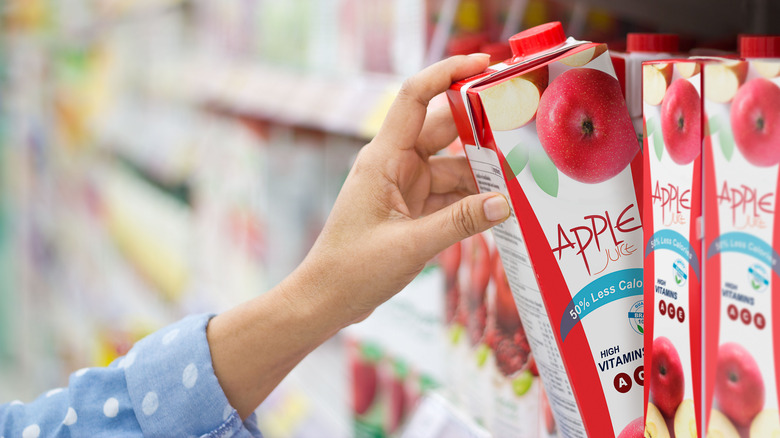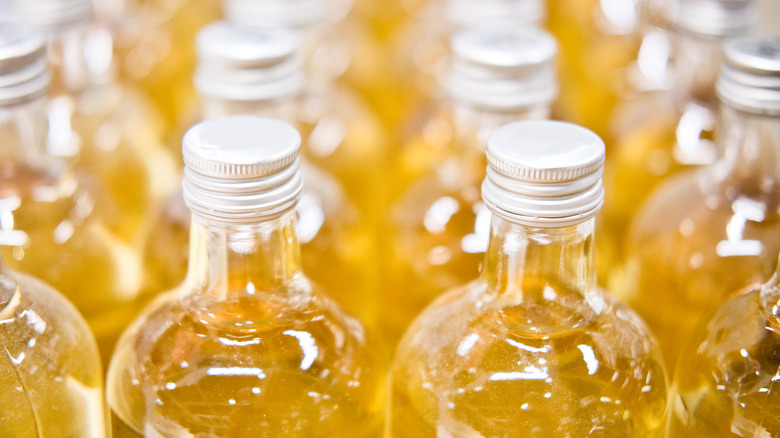The FDA Has Finally Issued Guidelines For Arsenic Levels In Apple Juice
While the Food and Drug Administration (FDA) might act swiftly when it comes to food recalls, its finalized guidance on arsenic levels in apple juice required a decade's worth of analysis. In 2013, the organization released a draft on recommended arsenic levels in apple juice. As of this week, the new FDA release states inorganic arsenic in apple juice should not exceed 10 parts per billion (ppb). While non-binding, this action level was chosen because the FDA believes that this level is achievable through "good manufacturing practices." If tested apple juice exceeds the cap, the FDA will consider action in order to protect public health.
When the FDA first addressed apple juice arsenic levels in 2013, it was in response to consumers' concerns over potential exposure. NBC News reported that the 10 parts per billion limit was actually the same as the permitted level in drinking water. The FDA reiterated the belief that apple juice did not present a threat to public health, however, it wanted to offer guidance to the industry and calm the panicking juice-buying public.
Be that as it may, inorganic arsenic is considered highly toxic. In fact, it is considered one of the World Health Organization's (WHO) 10 chemicals of major public health concern. It is believed that long-term exposure to inorganic arsenic can cause negative health impacts, including a potential link to cancer.
The FDA will continue to monitor arsenic levels within the food supply and through its "Closer to Zero" action plan, the FDA suggests that apple juice arsenic levels will be monitored and revisited in the future.
Did the FDA miss the mark on its arsenic levels in apple juice guidance?
The U.S. consumer relies on oversight agencies to ensure that their food supply is safe to consume. When the FDA released its recent guidelines on arsenic levels in apple juice, some expert commentators felt that the action did not fully address the concern.
In a comment to Food Safety News, Brian Ronholm, director of food policy for Consumer Reports, stated that he believes that the guidance will have minimal impact on public health because the industry is already observing the 10 parts per billion limit. Although he is encouraged that the government agency continues to keep the conversation active, a less conservative approach could have made a greater difference in the public's health.
As stated in a 2019 report, Consumer Reports tested 45 types of fruit juices for hard metal contaminants, including inorganic arsenic. The resulting recommendation was to set a threshold of 3 parts per billion in apple juice. In addition, the report recommended examining all fruit juices, not just that of apples. The recent FDA release chose not to impose this stricter recommendation, nor acknowledge other juices.
The goal here is to reduce young children's exposure to inorganic arsenic and while the science evolves this discussion will be ongoing. Whether the non-binding regulation gets strictly enforced or companies choose to adapt their products remains to be seen.

